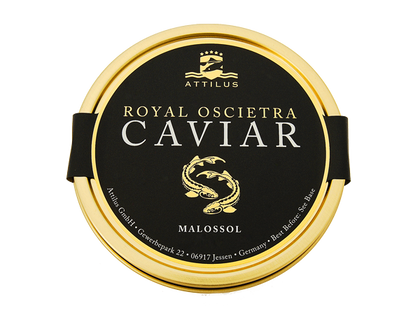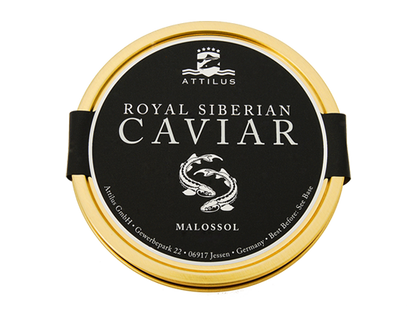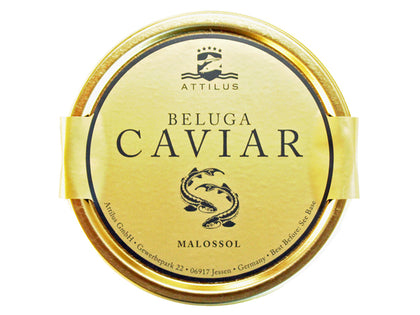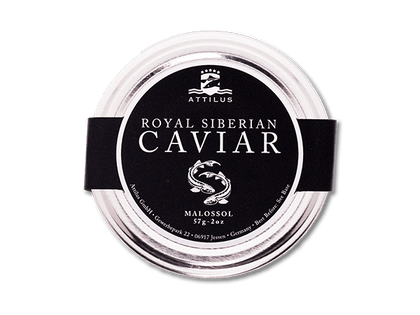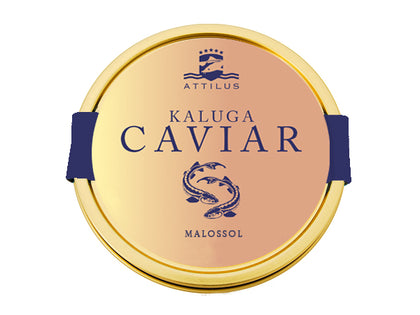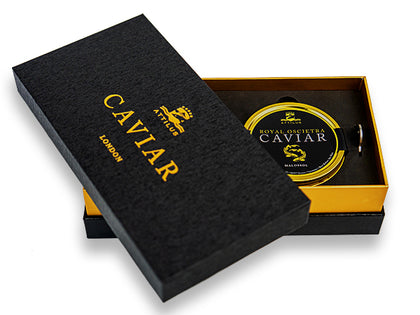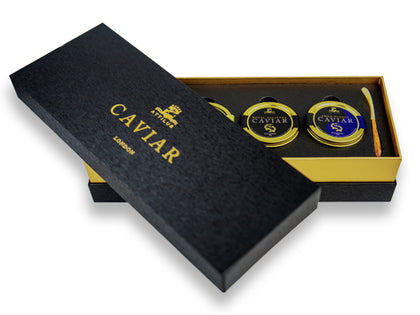Tasting Guide
The Guide to Enjoying Caviar - Attilus Caviar | London, UK
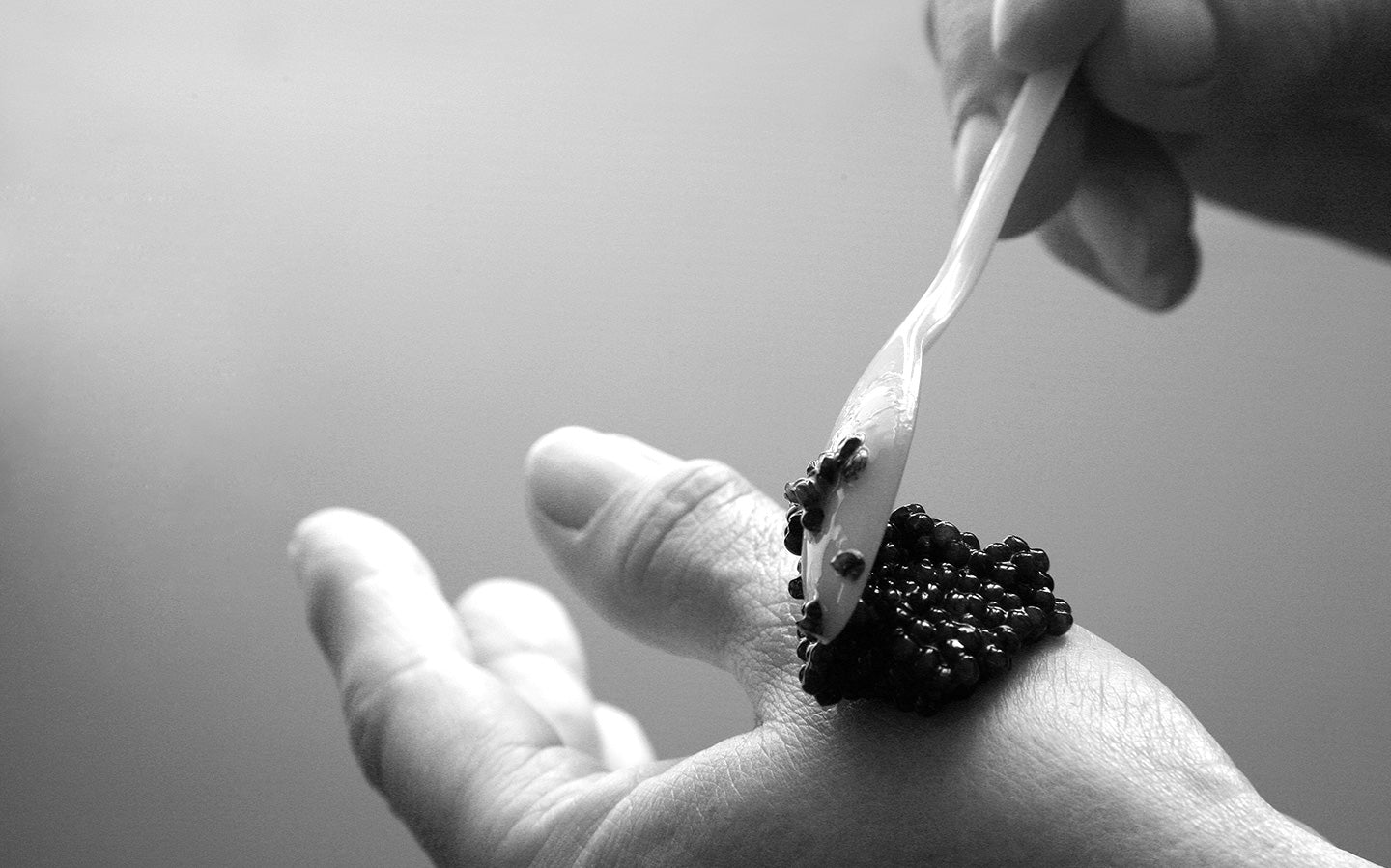
Eyes always widen with excitement when there is a cause to celebrate with an exceptional caviar. This is a guide to everything you should know before ordering caviar at your next lunch or serving it at your next dinner party.
Types of Sturgeon Caviar
Oscietra is the connoisseurs choice of caviar. Produced from the Russian sturgeon (Acipenser gueldenstadtii) it's firm pearl is mid-sized and the grains are dark coloured with an olive green or golden brown colour. Oscietra has a slightly nutty flavour with plenty of depth and richness and a mellow aftertaste that lingers long on the palate.
Baerii is considered to be among the finest caviar's in the world. Produced from the Siberian sturgeon (Acipenser baerii), its silky mid-sized pearls are recognised for their aromatic and elegant spicy flavour with an aftertaste that is crisp and clean and delivers a delicate pop in the finish.
Sevruga is derived from the smallest and most abundant of the four main species of sturgeon (the Acipenser stellatus). Its fine platinum pearls have a strong taste with a mildly fruity flavour.
Beluga is perhaps the world's best known caviar. Produced by the Huso Huso sturgeon, it is the rarest and therefore most expensive caviar. Its large roe are delicate in texture with colours ranging from light to dark grey and provide a rich, creamy flavour with a delicate hint of hazelnut.

Storage
To properly enjoy and savour this delightful culinary pleasure, it is important to learn how to approach caviar. Proper storage is crucial. Caviar should be stored at temperatures between -2 and +2ºC (the bottom part of your fridge is ideal). When you’re ready to eat, let the tin stand at room temperature for 5 minutes, then open it up – and enjoy.
A word of advice. Leaving a tin open for too long will lead to the eggs becoming soft and mushy due to oxidation. Once opened, a tin of caviar should be consumed within 2 to 3 days.
Savouring
Caviar – like fine wine – should be savoured. For a pure, unadulterated experience, put a small spoonful of caviar on the back of your hand, between your thumb and index finger. Then, without allowing your lips to touch the caviar, spoon the eggs in to your mouth and press them against your palate with your tongue until they pop, releasing a true taste explosion.
This tasting tradition dates back to when sampling before a purchase was mandatory - and because vendors usually only had one spoon! Furthermore, human skin transfers the right amount of body heat to release the aroma. Try it yourself! You’ll know if it’s good caviar because the best never leaves an odour on your hand after a tasting.
The appropriate spoons for tasting should be made of mother-of-pearl, glass or plastic, never use a metallic spoon because that can alter the flavour.

Serving
If you are serving caviar to friends or guests at home, here's how to proceed:
1. Decide how much caviar you'll need. We recommend a minimum serving of 30 grams per person. The first spoonful of caviar is to accustom the palate to the taste, the second is to appreciate scent, flavour and texture. The third is purely for pleasure!
2. Just before serving, remove the caviar from your fridge, open the tin and allow the caviar to air for three to five minutes so that it warms up naturally to room temperature. If you wish, present the caviar in the tin on a bed of ice.
3. Caviar should always be served with a non-metallic spoon, like mother of pearl, glass or plastic. Never use gold, silver or stainless steel as metal alters the flavour of the caviar.
4. Accompany with a glass of chilled Champagne if you want to find a perfect counterpoint to the savoury saltiness of caviar. Ice cold vodka is a venerable Russian tradition, with a subtle flavour that allows the distinctive taste of caviar to prevail. Alternatively, a chilled white wine is a good choice - a crisp white Burgundy such as Chablis or an austere Chardonnay complements the delicate flavour of caviar well.
5. Caviar is delicious on its own but can also work well with other foods as long as they're not too strongly scented. Potatoes, boiled eggs or scallops are ideal, but garnishes such as lemon wedges, finely chopped onions and capers are often too strong.
The most important thing is not to over-complicate the experience; just relax and enjoy savouring the taste of natural luxury.
